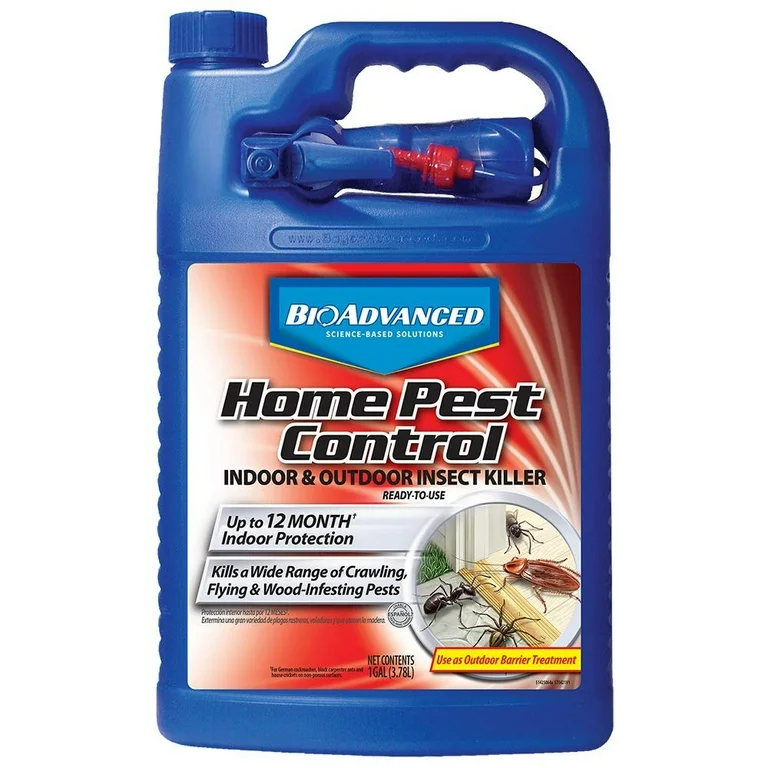Trusted A1 Exterminator Charlotte NC - Comprehensive Pest Solutions
Trusted A1 Exterminator Charlotte NC - Comprehensive Pest Solutions
Blog Article
Bed Pest Treatment Malfunction: Contrasting Chemical Vs. Non-Chemical Solutions
In the world of insect control, specifically when dealing with the consistent concern of bed pests, the selection between chemical and non-chemical therapy options can be a crucial one. Both techniques offer unique advantages and downsides, affecting variables such as efficiency, security factors to consider, and overall cost. By taking a look at the nuanced details of each technique, a clearer understanding of which course to pursue in addressing a bed pest invasion can be acquired.
Efficiency of Chemical Treatments
Chemical treatments for bed insect problems have been widely acknowledged for their quick and powerful efficacy in eradicating these bugs. When taking into consideration the efficiency of chemical treatments, it is essential to comprehend that they can supply a fast and thorough solution to a bed pest issue.
Additionally, chemical therapies have the benefit of using residual results, suggesting that they can continue to eliminate bed insects even after the preliminary application. This recurring action is especially valuable in combating any type of possible re-infestations. Additionally, the quick activity of chemical treatments can bring alleviation to individuals facing severe bed bug infestations, allowing them to regain control of their space swiftly.
Safety Worry About Chemical Solutions
One essential element that needs careful consideration when using chemical solutions for bed pest therapy is making certain the safety and security of residents and the environment. Direct exposure to particular chemicals made use of in bed pest treatments can lead to breathing problems, skin irritability, or various other negative reactions, particularly in individuals with pre-existing problems or level of sensitivities.
Moreover, the environmental influence of chemical options is an additional significant consideration. Some chemicals made use of in bed insect treatments might be damaging to beneficial bugs, wildlife, and ecological communities if they seep right into the soil or water systems. It is important to utilize chemical treatments judiciously, following security standards, and taking into consideration less harmful alternatives to minimize these dangers and guarantee the safe and reliable management of bed pest problems.
Advantages of Non-Chemical Strategies
Thinking about the possible safety problems and environmental influence linked with chemical remedies for bed insect therapy, exploring non-chemical techniques offers an encouraging option with a number of distinct advantages. Non-chemical treatments are ecologically friendly, as they do not add to air or water air pollution, making them a sustainable choice for insect control.
In addition, non-chemical remedies can be reliable in targeting bed insects, including hard-to-reach locations where chemical therapies may not penetrate. Techniques such as warmth treatment, vacuuming, heavy steam cleaning, and mattress encasements provide extensive eradication without making use of hazardous chemicals. In addition, non-chemical methods can be less disruptive, calling for very little preparation and enabling quicker reentry right into dealt with locations. Overall, choosing for non-chemical bed pest therapy methods not only focuses on safety and security and environmental management however likewise ensures detailed and reliable pest control.
Limitations of Non-Chemical Treatments

Furthermore, non-chemical YOURURL.com therapies typically need several applications to attain effective obliteration. This can be lengthy and may not constantly guarantee total elimination of all bed bugs and their eggs, especially in hard-to-reach or covert places.
In addition, the success of non-chemical treatments heavily relies upon correct application and thoroughness, which can be challenging for individuals without specialist expertise. Insufficient application of non-chemical approaches may lead to incomplete eradication, leading to consistent problems and the need for added therapies.
Therefore, while non-chemical therapies have their advantages, it is necessary to acknowledge these limitations and consider them when figuring out one of the most effective approach for managing bed bug problems.
Expense Contrast: Chemical Vs. Non-Chemical Options
Given the constraints associated with non-chemical therapies, an important element to evaluate in the context of bed insect administration is the expense contrast in between chemical and non-chemical options. Chemical therapies generally entail the application of pesticides by experts, which can vary from $250 to $900 per area, depending on the severity of the infestation and the size of the location to be treated. In comparison, non-chemical therapies like warm treatment or steam can be much more pricey, with costs varying from $1,000 to $6,000 for a whole home. While the initial expense of chemical treatments may seem lower, multiple therapies might be called for to completely get rid of the invasion, potentially boosting the overall price. On the various other hand, non-chemical options may offer a more sustainable and environmentally friendly option, although they can be cost-prohibitive for some individuals. Inevitably, when thinking about the cost of bed insect therapy alternatives, it is necessary to consider the upfront costs against the effectiveness and lasting sustainability of the selected technique.
Conclusion

Thinking about the prospective safety issues and environmental impact linked with chemical services for bed insect treatment, exploring non-chemical approaches presents an encouraging alternative with numerous distinct advantages.Offered the constraints linked with non-chemical therapies, a crucial element to assess in the context of bed bug management is the cost comparison in between chemical and non-chemical alternatives. In contrast, non-chemical therapies like heat treatment or vapor can be a lot more costly, with prices varying from $1,000 to $6,000 for an entire home. While the initial expense of chemical treatments may appear lower, multiple treatments may be required to fully get rid of the problem, potentially increasing the general expense.In verdict, when contrasting chemical and non-chemical bed insect therapy options, it is essential go to my blog to consider effectiveness, security, benefits, restrictions, and price.
Report this page